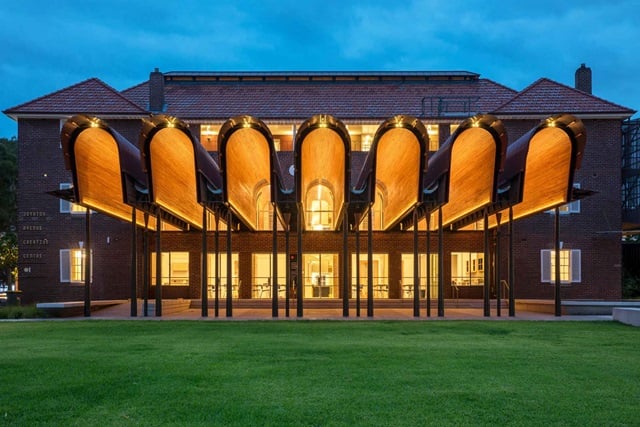Sydney Park wetlands: Major works, creation and history
Our water reuse project has been honoured with leading industry prizes.
Completed
What we’re doing
Water is reused to top up the wetlands and irrigate the 44 hectare park and supply the neighbouring depot.
The $11.2 million upgrade we funded with the federal government will see around 850 million litres of stormwater a year captured, cleaned for release downstream or potential reuse. The project delivered the our largest water harvesting system, and will help us achieve our 2030 target to reduce sediments/nutrients from stormwater runoff and 10% of water demand to be met through local water capture and reuse.
The Sydney Park water reuse project included:
- diverting stormwater through underground pipes
- filtering water through a pollutant trap and series of bio-retention beds
- revitalising the park’s wetland system to increase storage and improve water filtering
- landscape improvement to create more recreation and play opportunities
- connecting wetlands via a picturesque series of water cascades
- improving the footpath network
- installing new lighting, seating, and picnic areas
- installing a dog water station to keep dogs away from the wetlands and give them somewhere to cool off
- installing an artwork comprising a series of elevated terracotta channels that reflect the site’s history and aerate and distribute water throughout the wetland system.
- providing information to visitors within the park about the water treatment and ecological function of the wetlands.
How water harvesting works
Water harvesting is the diversion and storage of stormwater that would otherwise drain away. The system treats the water to deliver a new sustainable water supply to the wetlands, Sydney Park and potentially beyond to other water users across the local area.
Why we're doing this
Sydney Park has 4 wetland areas which are an important part of its ecosystems as well as playing a role in flood mitigation. Before the water reuse project started, these wetlands did not have a sustainable water supply.
A sustainable water supply protects the wetlands from problems such as:
- poor plant establishment
- blue-green algae blooms
- rapid growth of unwanted, submerged aquatic plants, such as azolla, which block sunlight.
Stormwater treatment process
Stormwater has been diverted through a new underground pipe into the Sydney Park wetlands, from the channel near the corner of Euston and Sydney Park roads.
The water is treated using:
- a pollution trap which removes litter, coarse sediment and organic matter from stormwater through a physical screen
- a bioretention system that collects water in shallow depressions and filters it through plant roots and soil
- more filtration and ultra-violet cleansing processes as water is drawn from the system for reuse.
Wetlands attract native wildlife
Urban wetlands are amazing systems. Not only do they clean stormwater, manage floods and reduce urban heat but they attract more wildlife to our urban spaces.
The native grasses surrounding the wetlands are bioretention swales, which help filter stormwater runoff and reduce contaminants flowing downstream into Botany Bay.
Due to the permanent water supply, the wetlands are an important habitat for native wildlife during dry periods.
You’ll see birds such as the black-winged stilt and the black-fronted dotterel. Black swans and the Japanese migratory bird, Latham’s snipe, also visit the park.
A dense planting of cladium in the middle of the wetlands is home to Australasian reed-warblers, superb fairy-wrens and other waterfowl. The wetlands are also attracting a growing number of frogs and eastern long-necked turtles.
Brickworks to rubbish dump, to a wetlands wonder today
Sydney Park has a fascinating history.
In the 19th and 20th centuries the park was a major source of clay, which was extracted and led to a number of family-run brick, pottery and tile works being established with brick-making becoming an important local industry.
Bedford Brickworks was established in Sydney Park in 1893. The brickworks was taken over by the Austral Brick Company in 1933 and remained operating until 1970.
From the late 1940s to the 1980s the former brick pits were used as a local tip. There was no wildlife and the site was unrecognisable from the green oasis of thriving wetlands today.





